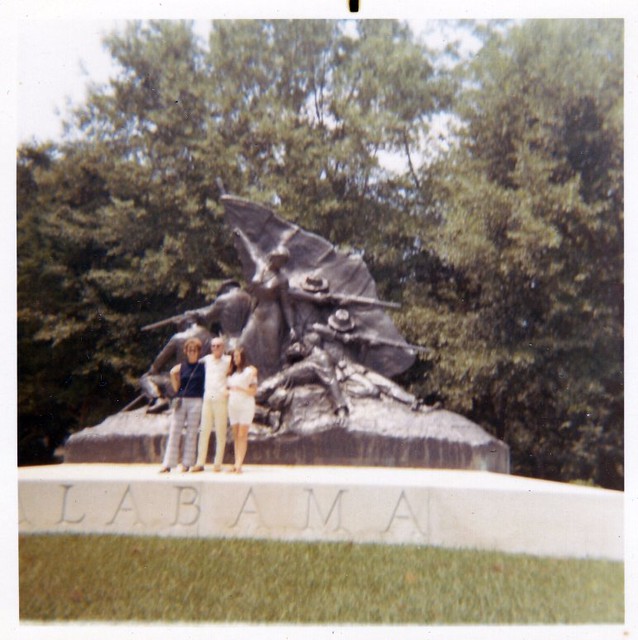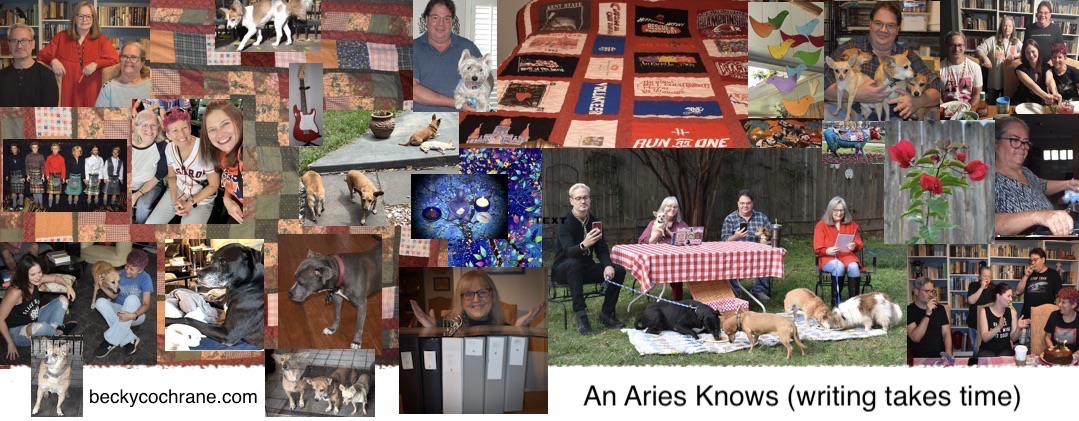We were sharing stories the other night about vacations or trips we took–or were forced to take–with our families/parents when we were young. At some point I said, “Yeah, I did a lot of eye rolling and complaining because that was my job as a teenager, but secretly I loved those trips.”
One in particular that I remember was when my parents decided to take a car trip along the Natchez Trace Parkway. I think we only did the Mississippi section, and I believe for at least part of our trip, two of my mother’s brothers (Buster and Gerald) and their wives (Annie Mae and Lola) were with us. I got to sit in the front seat a lot while my father drove, which meant I had control of the radio (AM only, back then), and I can still remember which songs played over and over. I’m sure that drove my parents crazy.
In my scrapbook, I have a lot of brochures and postcards from places we visited: in Jackson, The Old Capitol State Historical Museum, where “Miss Charlotte Capers” was Director, the Capitol, the War Memorial Building, and the Wildlife Museum. I have napkins from places where we must have slept and eaten along the way: the Albert Pick Motel in Natchez and the Friendship House Restaurant and Lounge: “Host to the Gulf Coast,” “Six Minutes from Biloxi,” “Six Minutes from Gulfport.” Both are gone now; apparently Hurricane Camille took the Friendship House. (Bitch!)
And in Vicksburg, we visited the National Military Park. Of course. I had two parents who were history buffs–plus my father taught American history and military history. Battlefields were definitely part of any Cochrane Tour, and I remember my father explaining how General Grant strategized and restrategized to take control of Vicksburg from the Confederate forces, which he finally did on July 4, 1863. (Bastard!)
Almost 17,000 Union soldiers are buried in the National Cemetery, and a staggering 13,000 of those are unidentified. They either died in Vicksburg or died elsewhere in the South and were reinterred in this federal cemetery. Because at that time, federal cemeteries were for those who died “in service to their country,” soldiers fighting for seceded states couldn’t be buried there. In the Vicksburg City Cemetery, Cedar Hill, approximately 5000 Confederate dead–only about 1600 of them identified–are buried in the Soldier’s Rest section. Ultimately the rules were changed so men who’d served in the Confederate Army but died years later could be buried in federal cemeteries. The Vicksburg National Cemetery also includes the graves of those who served in later conflicts, as well as some of their wives and children.
One of the stops on our tour included the Alabama Memorial, commemorating the men and women of my home state during the war. (And in the South, when we say it, it’s “The War,” and we mean only one.) Here, my parents and I are tiny people standing on the monument. I just love that my mother was tromping around national parks and cemeteries in heels.


Living so close to the good Dr., July 4th is no longer Independence Day, it is the day “we” lost Vicksburg, and Gettysburg. Also his father worked for the park service and he loved when his Dad worked on the Natchez Trace.
I do remember celebrating Confederate Decoration Day when we lived in Tennessee – June 3rd. And my Papa is buried in a Confederate Cemetery. One thing I love about living in the south is stumbling across the occasional confederate cemetery. My favorite battlefield … Chickamauga … because you knew I had one.
I have records of ancestors on both sides of my family applying for their Confederate widows’ pensions. My mother really loved this kind of research and thanks to her work, along with that of a cousin and aunt, I was assured that my pedigree entitles me to membership in both the United Daughters of the Confederacy and the Daughters of the American Revolution.
See you at the next meeting. 😉